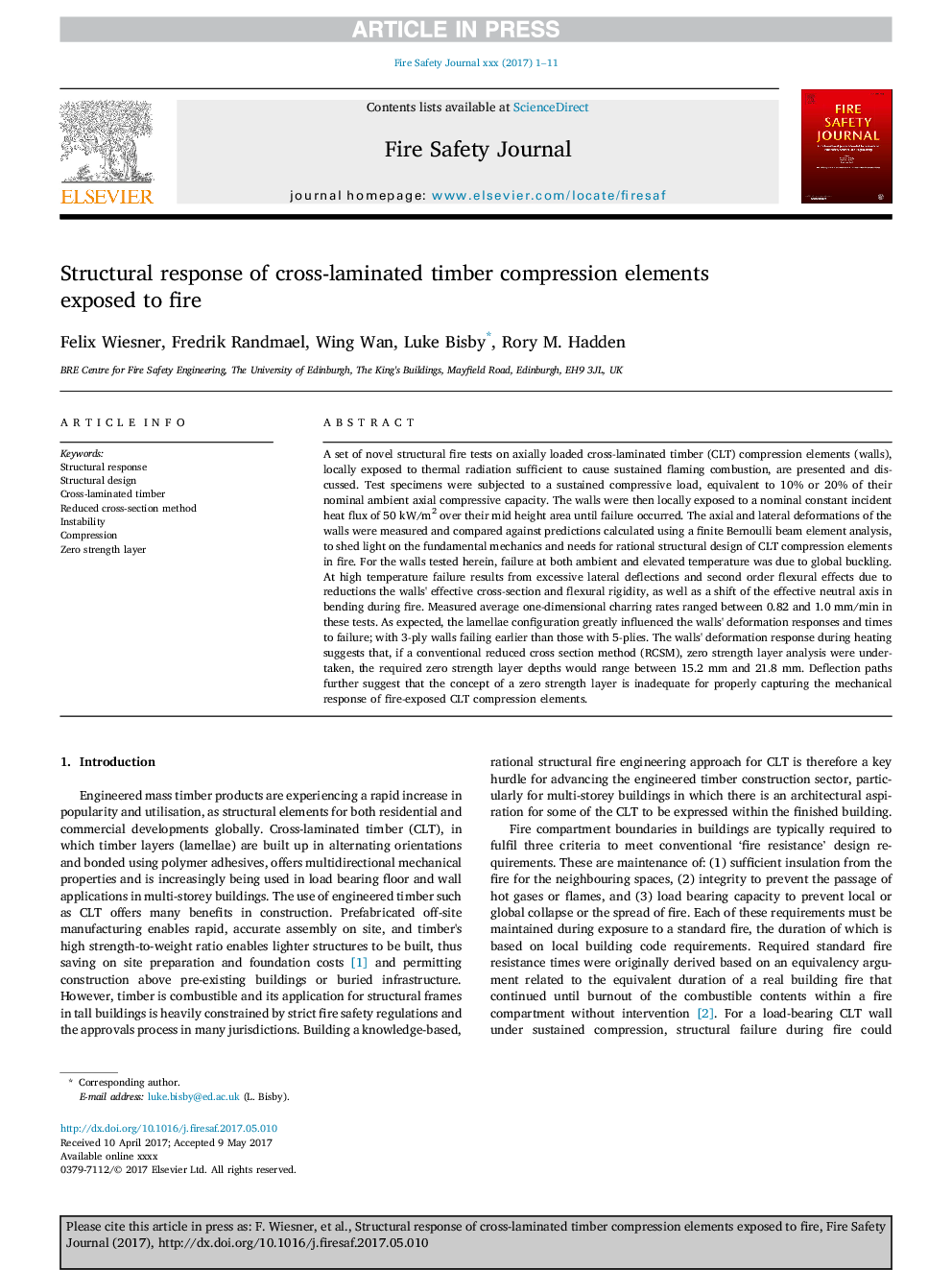| کد مقاله | کد نشریه | سال انتشار | مقاله انگلیسی | نسخه تمام متن |
|---|---|---|---|---|
| 4920883 | 1429212 | 2017 | 11 صفحه PDF | دانلود رایگان |
عنوان انگلیسی مقاله ISI
Structural response of cross-laminated timber compression elements exposed to fire
ترجمه فارسی عنوان
واکنش ساختاری عناصر فشرده سازی چوب تراشه که در معرض آتش سوزی قرار دارند
دانلود مقاله + سفارش ترجمه
دانلود مقاله ISI انگلیسی
رایگان برای ایرانیان
کلمات کلیدی
واکنش ساختاری، طراحی سازه، چوب چند لایه روش مقطعی کاهش یافته، بی ثباتی، فشرده سازی، لایه قدرت صفر،
موضوعات مرتبط
مهندسی و علوم پایه
سایر رشته های مهندسی
مهندسی عمران و سازه
چکیده انگلیسی
A set of novel structural fire tests on axially loaded cross-laminated timber (CLT) compression elements (walls), locally exposed to thermal radiation sufficient to cause sustained flaming combustion, are presented and discussed. Test specimens were subjected to a sustained compressive load, equivalent to 10% or 20% of their nominal ambient axial compressive capacity. The walls were then locally exposed to a nominal constant incident heat flux of 50Â kW/m2 over their mid height area until failure occurred. The axial and lateral deformations of the walls were measured and compared against predictions calculated using a finite Bernoulli beam element analysis, to shed light on the fundamental mechanics and needs for rational structural design of CLT compression elements in fire. For the walls tested herein, failure at both ambient and elevated temperature was due to global buckling. At high temperature failure results from excessive lateral deflections and second order flexural effects due to reductions the walls' effective cross-section and flexural rigidity, as well as a shift of the effective neutral axis in bending during fire. Measured average one-dimensional charring rates ranged between 0.82 and 1.0Â mm/min in these tests. As expected, the lamellae configuration greatly influenced the walls' deformation responses and times to failure; with 3-ply walls failing earlier than those with 5-plies. The walls' deformation response during heating suggests that, if a conventional reduced cross section method (RCSM), zero strength layer analysis were undertaken, the required zero strength layer depths would range between 15.2Â mm and 21.8Â mm. Deflection paths further suggest that the concept of a zero strength layer is inadequate for properly capturing the mechanical response of fire-exposed CLT compression elements.
ناشر
Database: Elsevier - ScienceDirect (ساینس دایرکت)
Journal: Fire Safety Journal - Volume 91, July 2017, Pages 56-67
Journal: Fire Safety Journal - Volume 91, July 2017, Pages 56-67
نویسندگان
Felix Wiesner, Fredrik Randmael, Wing Wan, Luke Bisby, Rory M. Hadden,
